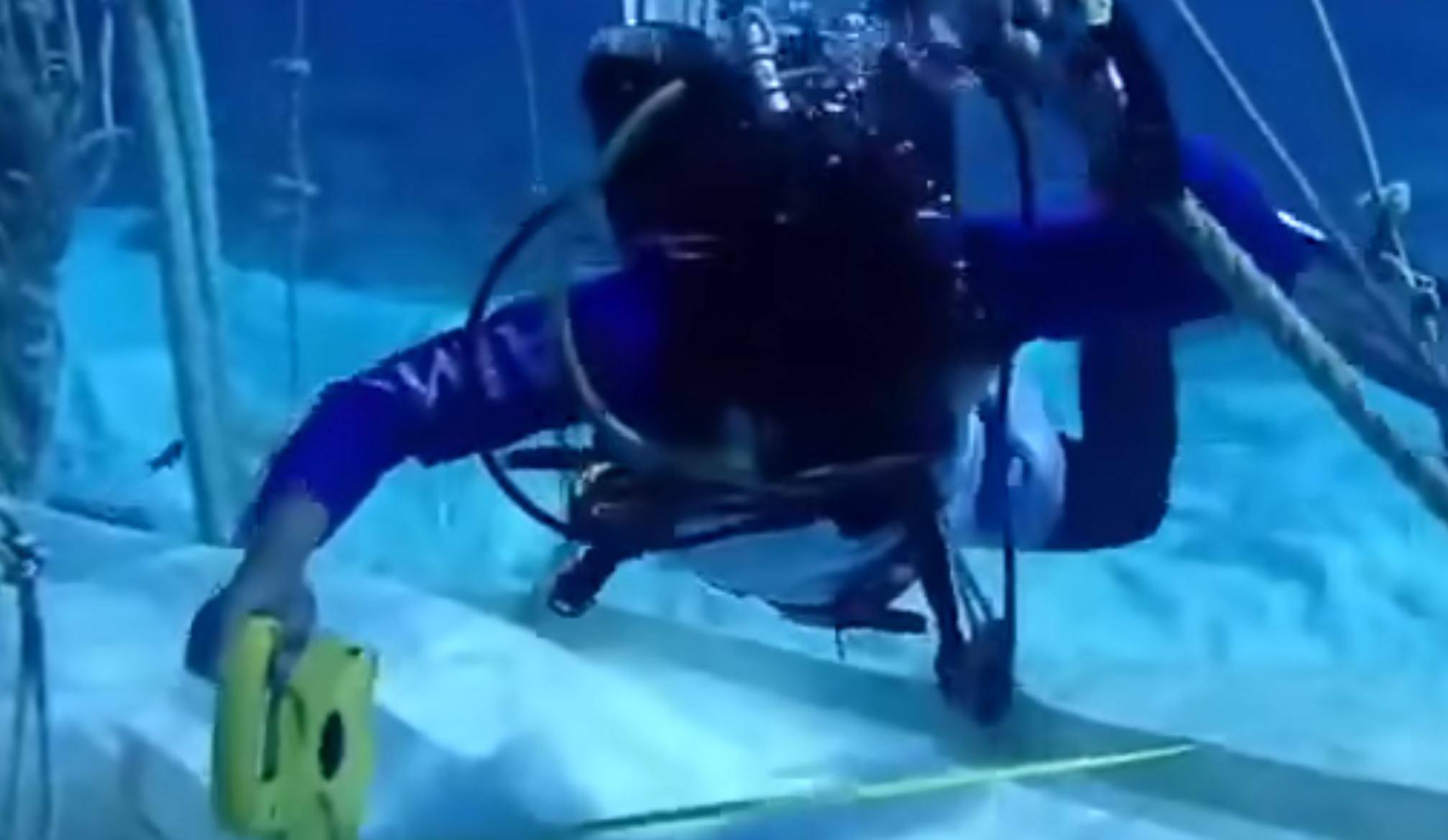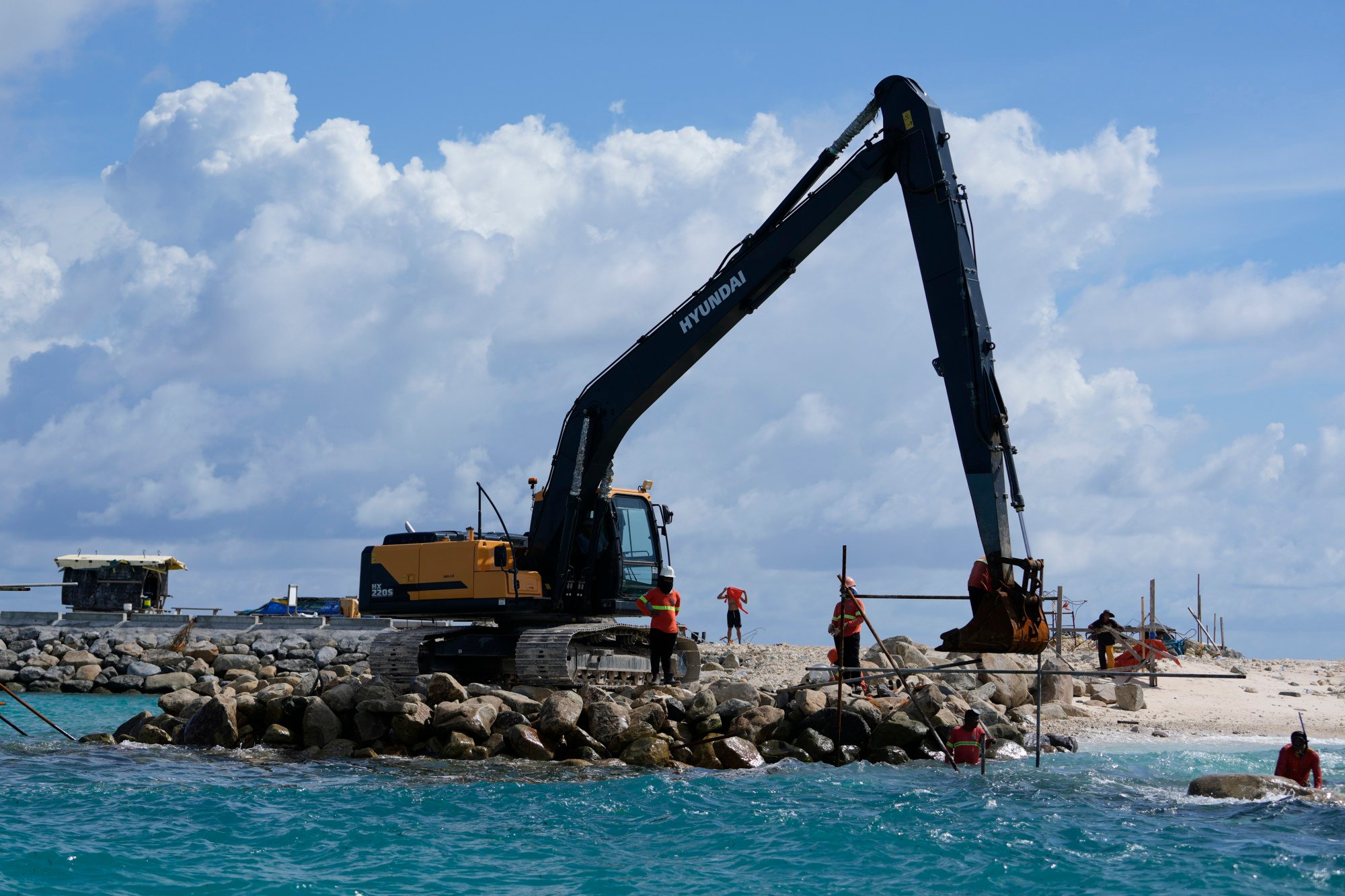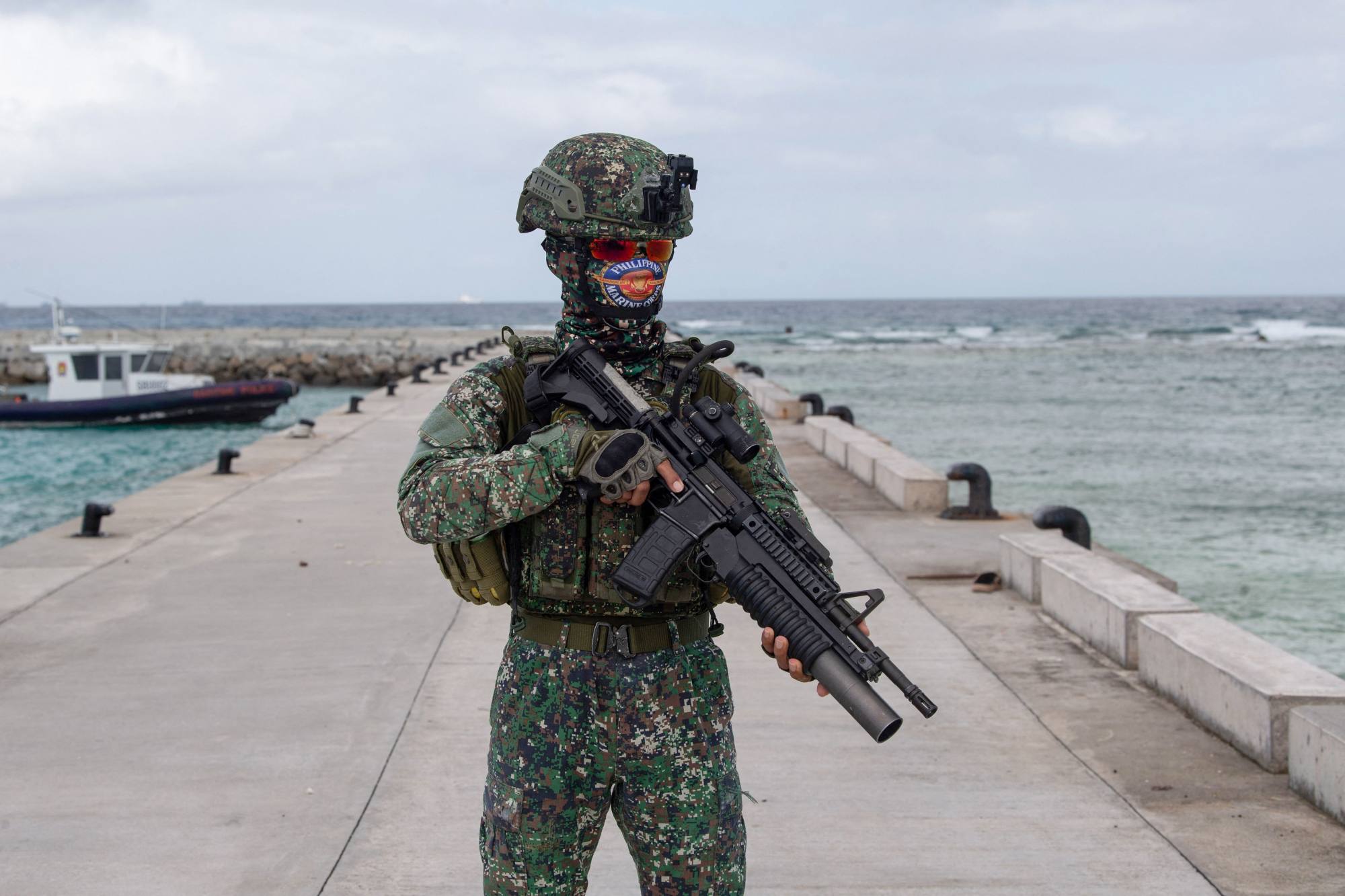Philippines weighs legal action against China over US$194,000 coral reef damage
Investigators said divers were unable to remove a huge anchor still blocking sunlight from corals near Thitu Island in the South China Sea

The Philippines has publicly accused a Chinese vessel of causing more than 11 million pesos (US$194,000) in damage to protected coral reefs near Thitu Island in the South China Sea.
On Monday, Manila released the results of an environmental survey showing that a Chinese ship had ran aground near Thitu Island in June.
Investigators found that the vessel dragged a parachute anchor across the sensitive marine ecosystem, scarring at least 464 square metres (4,994 square feet) of reef less than 3km from Thitu – one of the Philippines’ main outposts in the disputed waters, known locally as Pag-asa Island.
The National Task Force for the West Philippine Sea presented the findings, which were based on dives conducted by the Palawan Council for Sustainable Development, Western Philippines and the Philippine coastguard.
The vessel, identified by hull number 16838, was stranded on June 7 for nearly three hours before freeing itself and being escorted away by the China Coast Guard and two other Chinese ships, the report found.
Before departing, the ship reportedly left behind the parachute anchor, which dragged across some 30 per cent of the reef area and was later found resting atop 307 square metres of coral, blocking sunlight and further threatening marine life, according to representatives of the council.
Benjamin Gonzales, a member of the council’s scientific advisory panel, warned that the anchor should be removed quickly to prevent further harm.
Although the team had found broken fragments of soft and hard corals, the absence of flattened or crushed reef structures suggested the damage was primarily caused by the dragging anchor.
“We conclude, based on our observation, that the damages on the reef at the impacted area were caused by the drag of the reef anchor,” said Mark Dela Cruz, the council’s chief of habitat management. He noted that the anchor, which was nine metres (30 feet) underwater, would require specialised equipment to remove after six divers had failed to lift it.
International law
The Philippine government is now weighing its next steps. The survey’s findings will be submitted to the departments of foreign affairs and justice, which will consider possible penalties against China under local laws.
Teodoro Mata, the council’s executive director, said the incident occurred within a maximum protection zone, where all human activity is prohibited.
Unhandled type: inline-plus-widget {“type”:”inline-plus-widget”}
Commodore Jay Tarriela, the Philippine coastguard spokesman for West Philippine Sea affairs, said the anchor was located 2.6km (1.6 miles) from Thitu Island, within Manila’s 12-nautical-mile (22km) territorial sea.
“We cannot speak for the People’s Republic of China,” Tarriela said at Monday’s press briefing. “But again, we still accord with them the sense that they are a responsible member of the international community. So we are hopeful that through the [Philippine] foreign affairs department, we can be able to reach out to them.”

China claims Thitu, as well as much of the South China Sea, under its sweeping nine-dash-line.
Edcel Ibarra, an assistant professor of political science at the University of the Philippines, said the findings by the Palawan team could be a starting point for Manila and Beijing to “moderate their positions” and establish a joint fact-finding committee.
“The Philippines should still unilaterally publicise a preliminary report, but it should invite China towards a final report,” Ibarra said, adding that Beijing might be incentivised to take part “if it wants to rebuild its reputation as a state that respects Unclos [the United Nations Convention on the Law of the Sea] and international law”.
He added that a joint fact-finding commission under a bilateral agreement would be preferable to immediate arbitration, urging Manila to “try to bring China to the negotiating table first”.
But Dindo Manhit, president of the Manila-based Stratbase-ADR Institute think tank, argued that the Philippines must demand accountability from China for the environmental harm caused, in line with Manila’s commitment to international law.
“While there is little expectation that China will comply, given its consistent disregard for international law such as the 2016 arbitral award, pursuing reparations affirms the Philippines’ commitment to the rules-based order and strengthens its position in asserting its rights in the West Philippine Sea,” he said.

Manhit said the Thitu Island incident had reinforced the findings of the 2016 arbitral tribunal, which ruled that China had violated its environmental obligations under Unclos “by tolerating activities that caused irreversible damage to marine ecosystems”.
“The Philippines’ assertive transparency strategy in exposing China’s grey zone tactics has proven effective in raising public awareness and rallying international support,” he said. “The government should expand this strategy to include activities by China that cause damage to the marine environment in the West Philippine Sea.”
This latest incident adds to a series of similar Philippine accusations against China. Last year, authorities in Manila alleged that Chinese vessels had harvested giant clams and dredged reefs at Scarborough Shoal, calling for an international inquiry. Officials have also voiced alarm over the widespread destruction of coral reefs near Pag-asa Island, blaming Beijing’s land reclamation.
Building on its 2016 victory at The Hague, the Philippines announced in January that it was preparing a second international legal case against China, this time focusing on environmental destruction in the South China Sea. Justice Secretary Jesus Crispin Remulla said the government was in the final stages of selecting a venue, with the Permanent Court of Arbitration and the International Court of Justice among the options, and aimed to seek reparations from China for its activities.